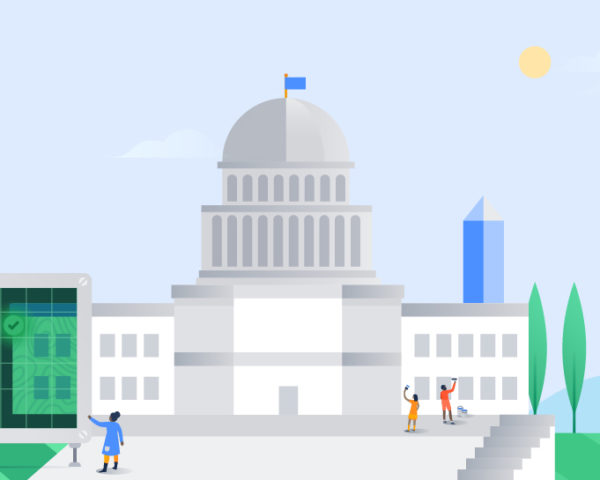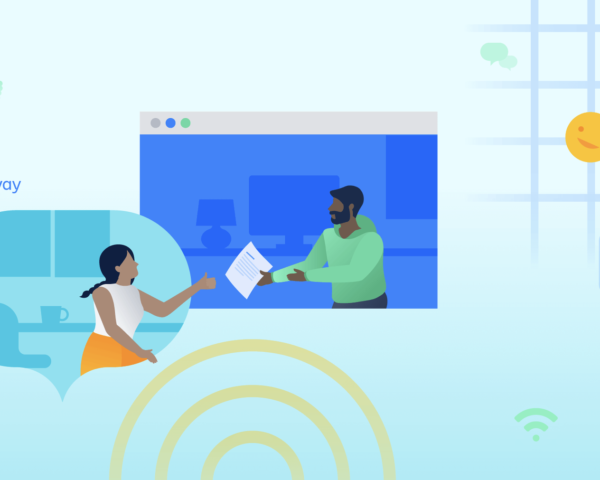
By now, we all realize that remote work is here to stay for government agencies, but implementing telework as a widespread solution is a challenge for many employees – especially those who often work on complex projects across multiple teams. For remote work to be truly effective, there needs to be a consideration of how a government team actually functions and the types of work individuals perform. Only then can workable solutions be implemented that support the team’s goals – no matter where they’re located.
Jason Miller of Federal News Network sat down with Phoebe Nerdahl, Public Sector Lead at Atlassian, for some insightful perspective on the different types of government projects and what the future holds for remote work.
Phoebe emphasizes that Atlassian is dedicated to helping government employees wherever they are, but notes that “it’s not enough to just go to cloud-based tools; just because work is cloud based doesn’t mean it supports how teams operate.” She adds, “There has to be an understanding of culture, communication, and collaboration flexibility woven into the way tools operate in order for them to work in a remote setting.”
Understanding different types of government work
Atlassian takes a distinctive view of government work, sorting it into three categories: task and work management, project management, and program management. “Since each type of work has fundamentally different needs,” Phoebe says, “agencies need to consider each one separately when supporting remote teams.”
Task and work management
Task and work management is about efficiency and productive collaboration among individuals. This is the work that’s done every day, whether it’s an individual checklist or an ongoing set of workflow tasks managed by a small group. Pre-pandemic, this kind of task management often comprised a combination of written notes and hallway discussions, but that doesn’t work in a remote environment. “Atlassian has discovered that the best way to enable individual work management is by creating a simple, easy-to-use way to see, share, and track tasks and ideas. The key is to remove the barriers to technology use and weave together fluid individual discussions around assets, tasks, and deadlines,” says Phoebe.
Project management
Project management is about effectively driving team objectives and timelines to produce an outcome. This really describes the work of government: Harnessing teams of people to move the agency, citizens, and stakeholders forward. “Project management is larger in scope than task management,” Phoebe notes, “as it also involves a team or teams, distinct tasks, group milestones, review, and oversight.”
The Project Management Institute (PMI) has identified three critical layers that must function within a federal organization before discipline can flourish in a project: (1) the reporting layer, where a project management office must report through a logical chain of command aligned with the larger organization’s mission and goals; (2) the system layer, comprising communication, workflow, and technology and functional systems; and (3) the cultural layer, where project management needs to integrate with the behavioral norms, language, and customs of the larger organization.
Phoebe explains, “When these three layers aren’t accounted for in a remote environment, things become much more difficult. In order to work remotely, teams need a toolset that can easily adapt to the culture and workflows that would be present in a conventional office environment.” Such a toolset allows each project to interact with employees in a meaningful way and show progress, results, and issues. Government agencies need the right project management tools to enable this type of transparency – without a lot of configuration.
Program management
Phoebe points out that program management is about making the best use of agency resources in relation to the core mission. “It focuses on the major initiatives inside an agency – ones that are usually subdivided into many smaller projects and initiatives that are often monitored at an executive level.”
She adds that it’s often very challenging to stay on budget and on schedule in the public sector, but that’s not because of individuals’ actions. It’s because teams have difficulty accessing the project data in a real and actionable way. Using detailed plan-level data with information on individual tasks, deep learning, and artificial intelligence can identify patterns of similarity among project tasks and hierarchies. However, this can only happen, Phoebe says, “when you can drill down to the individual task level – and that’s very hard to do with complex programs that involve many different departments and layers of contractors and subcontractors – unless you have the right tools.”
As far as how the shift to data-driven decisions is changing the game for complex program management, Phoebe notes, “Today, changing attitudes toward data collection, data-driven prediction, and decision-making offers unprecedented opportunities in the field of project planning. By using historical data on projects’ initial forecasted completion dates and total costs – in addition to realized or actual expenditures and durations – accuracy estimates can be established, which can then be used when forecasting and setting new project goals.”
How Atlassian can help
Phoebe says, “At the core of what we do, Atlassian helps government agencies unleash their full potential. Whether the work is performed remotely or in-person, our tools help agencies better harness the power of their human resources.”
In some cases, this can be accomplished through more effective collaboration solutions; in others, it’s powerful automation that frees team members from mundane activities so they can focus on more strategic or impactful tasks. Or, as Phoebe mentions, “it can be through providing highly intuitive dashboards that help executive teams understand project and program progress. This enables them to make faster, better decisions.”
Gain more insight into the future of government work with Atlassian – and listen to the complete interview here.
Click below to And now, you can also download content from our virtual Atlassian Team Tour Government Symposium.


